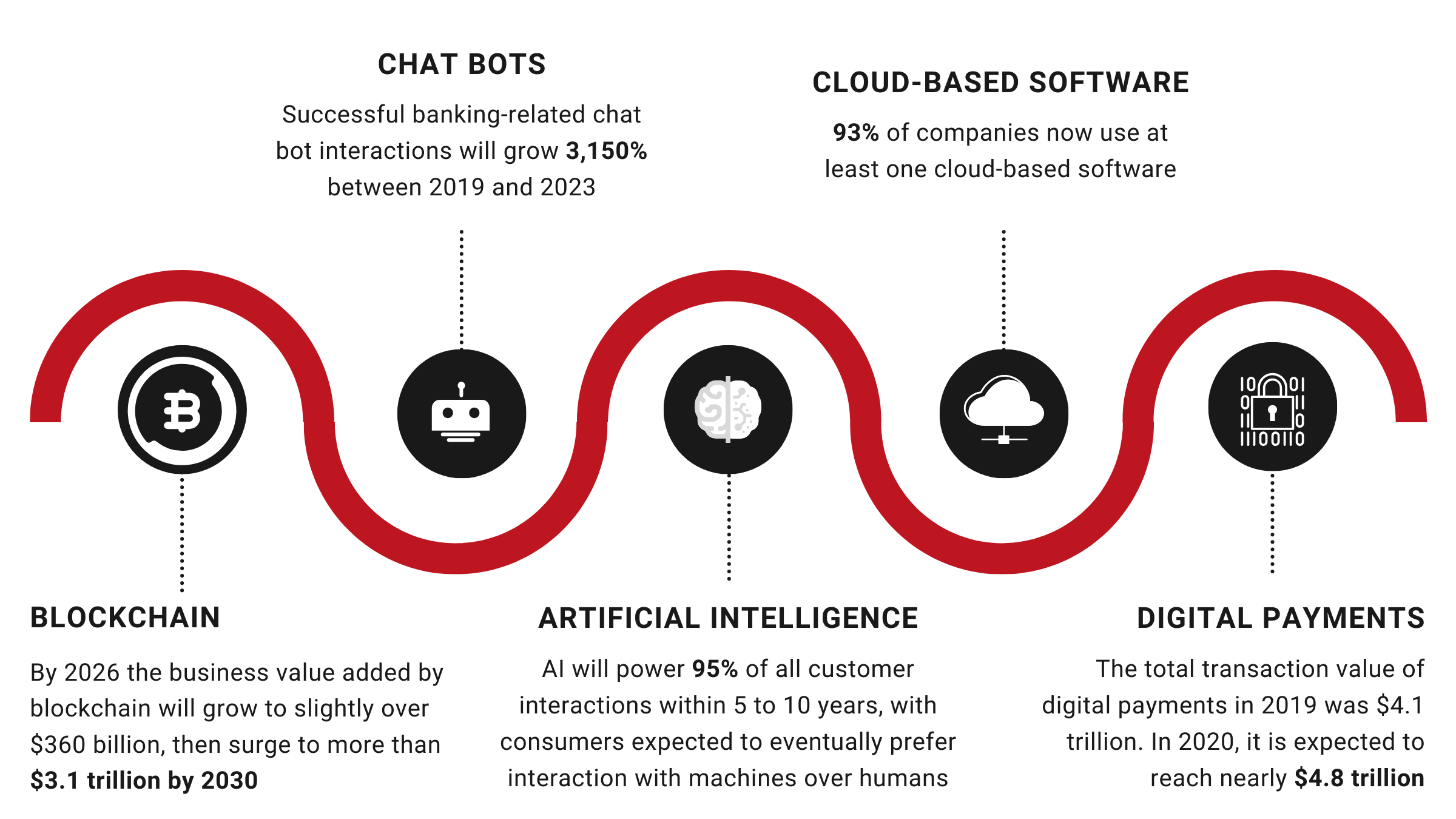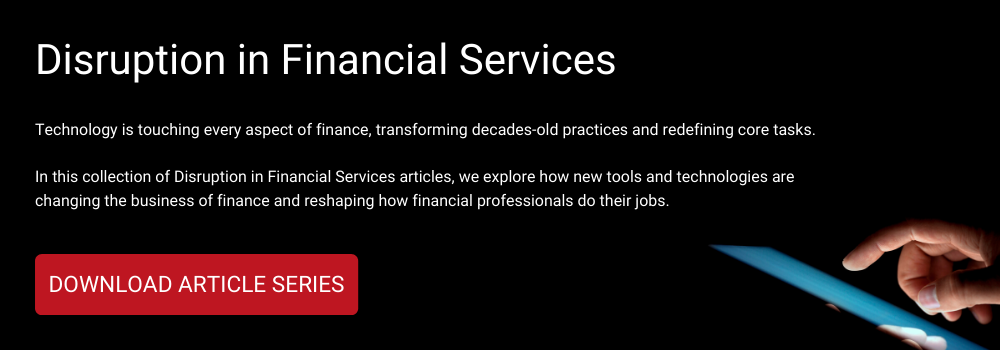5 FinTech Stats Every Finance Professional Should Know
FinTech continues to disrupt the world of trading, banking, financial advice and financial products. The industry is growing rapidly, with new entrants creating opportunities to reinvent traditional banking for both consumers and businesses.
Rising investment, growing deal sizes, higher levels of merger & acquisition activity, and the expanding geographic spread of deals characterize the maturing FinTech sector. According to a KMPG study, the global FinTech market reached nearly $112 billion in 2018, a 120% increase from the year before.
Several other interesting statistics have been published by various leading financial firms, including:

1 By 2026 the business value added by blockchain will grow to slightly over $360 billion, then surge to more than $3.1 trillion by 2030
Gartner

To remain competitive, financial firms will have to commit to innovation and attracting industry experts. Gartner forecasts blockchain will generate an annual business value of more than $3 trillion by 2030, PwC explains that “it’s possible to imagine that 10% to 20% of global economic infrastructure will be running on blockchain-based systems by that same year.” Perhaps even more exciting is the emergence of new ways of utilizing blockchain. These include tax regulations and compliance, equity trading, and medical record keeping. Whether you are directly involved in the digital currency space or not, it’s essential to develop an understanding of blockchain as it is transforming how we do business in all industries.
2 Successful banking-related chat bot interactions will grow 3,150% between 2019 and 2023
Juniper

The same research predicts operational cost savings from using chatbots in banking is to reach nearly $7.3 billion by 2023 and continue to increase as more financial and technology firms implement these services. As chatbots become more advanced, banks will need to have a conversational banking strategy that includes investing in the right human talent with skills in AI development and natural language processing experts who can keep up with technological advancements and integrations. As a result, banks will need to increase the focus on digital security to protect sensitive information.
3 AI will power 95% of all customer interactions within 5 to 10 years, with consumers expected to eventually prefer interaction with machines over humans
Servion

However, improvements in online banking services mean users no longer feel the need to visit physical locations. According to PWC’s Digital Banking Consumer Survey, despite consumers seeing value in having local branches, 62% of respondents said their visit frequency has dropped from “a few times a month” to “a few times a year”.
4 93% of companies now use at least one cloud-based software
SpiceWorks

As in many sectors, cloud computing in finance began with non-core business processes, such as human resources and admin systems. Today, we are seeing core processes such as credit risk management, payment transactions, and customer due diligence moving to the cloud. Spiceworks reported the top three most-used cloud services are web hosting (76%), followed by email hosting (56%), and cloud storage and file-sharing (53%).
As a highly regulated sector that handles some of our most sensitive personal information, public cloud service providers are continuing to work closely with finance industry players and regulators in order to effectively address security, governance, and compliance requirements.
5 The total transaction value of digital payments in 2019 was $4.1 trillion. In 2020, it is expected to reach nearly $4.8 trillion
Statista

In order to fulfill an unprecedented rise in the demand for augmented user-friendly payment experiences, banks have become proactive adopters of these exciting developments. They are rapidly partnering, supporting, and promoting players in the FinTech space and adopting software, programs, and applications.
In conclusion, as we move into the 2020s, financial technology solutions will become an integral part of modern life. Mobile apps, AI, blockchain, and extended-reality technologies will continue to grow. This emphasizes the need for companies to prioritize innovation, or risk getting left behind.
Compliance, cyber security, and skills gap education are just a few of the challenges facing emerging FinTech firms. At the same time, big banks and traditional financial institutions are being confronted with the reality that consumers are shifting their focus to ease of access and use. They are feeling pressure to grow, innovate, create better operating environments, utilize new capabilities, improve culture, and operate flawlessly all while meeting strict regulatory requirements.
Sources:
PWC: https://www.pwc.ru/en/press-releases.html
Gartner: https://www.gartner.com/smarterwithgartner/the-cios-guide-to-blockchain/
Juniper: https://www.juniperresearch.com/press/press-releases/bank-cost-savings-via-chatbots-reach-7-3bn-2023
Servion: https://servion.com/blog/what-emerging-technologies-future-customer-experience/
Singularity University: https://su.org/
Spice Works: https://www.spiceworks.com/press/releases/2016-03-08/
Satista: https://www.statista.com/outlook/296/100/digital-payments/worldwide
Carsurance: https://carsurance.net/blog/fintech-statistics



